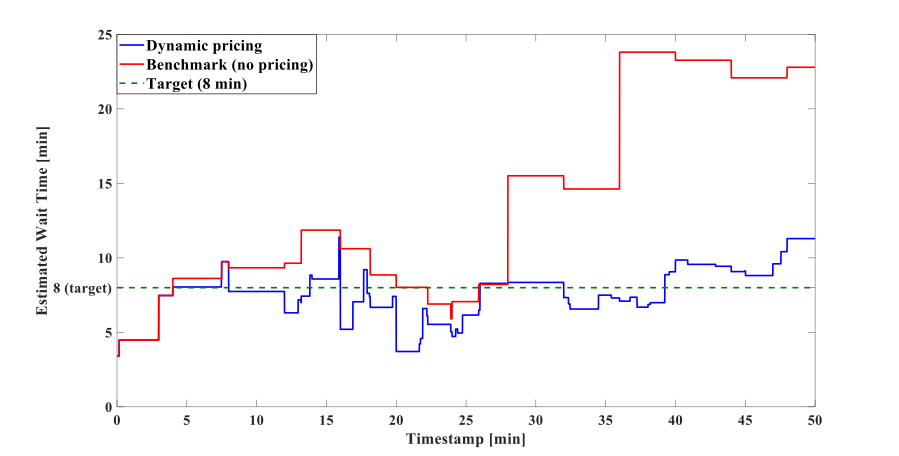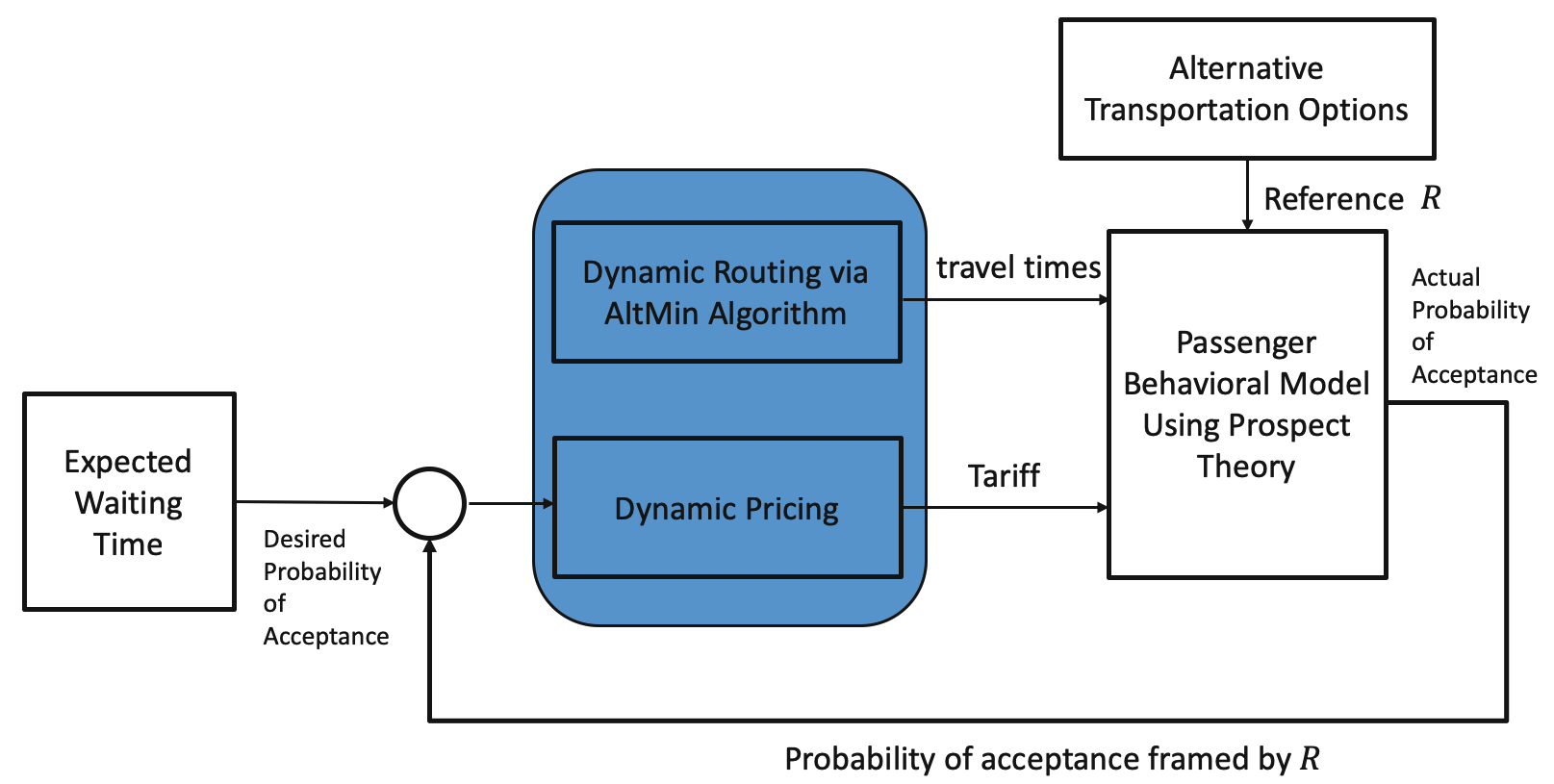Smart City
The concept of Smart City is gaining popular attention with the goal of sustainability and efficiency, the needs of enhancing quality and performance, and the explosion of technological advances in communication and computation. Given that 50% of the world’s population lives in urban regions, critical infrastructures of energy, transportation, and health and their growing interdependencies have to be collectively analyzed and designed to provide the substrate for the realization of the Smart City Concept.
The Active Adaptive Control Laboratory at MIT is addressing one of these infrastructures, Urban Mobility, and in particular
- Dynamic routing and dynamic pricing for shared Mobility on Demand services
- Real-time control of traffic flow using dynamic toll pricing
Shared Mobility on Demand Services

Until recently, available solutions for urban transportation have been clearly binary, with the first option represented by public transportation that provides low cost and reduced flexibility and the second corresponding to private automobiles that have high cost and improved flexibility. Emergence of ride sharing platforms such as Uber, Lyft, and Didi Chuxing have changed this landscape, introducing a continuum of services at various levels of cost, flexibility, and carbon footprint. With a projection of a total number of 2 billion vehicles on roads by the year 2035, the emergence of new concepts such as Mobility on Demand are urgently needed. One such paradigm is the notion of Shared Mobility on Demand Services (SMoDS), which consists of customized dynamic routing and dynamic pricing for multiple passengers.
The Active Adaptive Control Laboratory at MIT has been developing a complete solution to the SMoDS that can provide a customized combination of affordability, flexibility, and carbon footprint. The development of the SMoDS solution employs a sociotechnical modeling framework, where dynamic routing and dynamic pricing are two central components. We address both of the aspects.

The SMoDS consists of four steps elaborated as follows:
- Request: passengers request the SMoDS rides with specified pickup/drop-off locations, maximum distances willing to walk, and preferred time windows for pickup and drop-off.
- Offer: the SMoDS server distributes offers to passengers with ride specifications including pickup and drop-off locations and times, walking distances, and prices.
- Decide: passengers decide whether to accept or decline the ride offers.
- Operate: the SMoDS server sends out ride details to the corresponding passengers and vehicles, and the trips start.

Topics that we are specifically interested in are the following:
- Dynamic routing via distributed optimization.
- Dynamic pricing via reinforcement leaning.
- Passenger behavioral modeling via Cumulative Prospect Theory.
- Scaling laws of the SMoDS.
- Fleet portfolio optimization.
- Macroscopic impacts of SMoDS on the infrastructure, environment, and relevant industries.
Real-time Control of Traffic Flow Using Dynamic Toll Pricing
With the growth and expansion of many large metropolitan centers in the last few decades, the problem of traffic congestion continues to grow and vex commuters, commercial drivers, city planners and officials, and environmentalists worldwide. Over 1 billion vehicles travel on the roads today, and that number is projected to double by 2020. Driving a car is an unavoidable choice for at least 65% of city populations, who rely on their vehicles to get to school or to work. An on-going project in our laboratory, funded by Ford, explores the use of dynamic toll pricing for alleviating traffic congestion, and increasing traffic flow during peak hours of the day. A model-based approach to dynamic toll pricing has been developed to provide a systematic method for determining optimal freeway pricing schemes. Real-time traffic information from on-road sensors is integrated with complex models of driver behavior and traffic flow to determine the toll price, which acts as a controller to divert traffic flows to desired lanes and routes and lessen the traffic congestion experienced in certain areas. The three key findings from this study are:
- With careful design of the pricing scheme, that includes important linear and nonlinear components, our dynamic toll pricing system has the ability to both prevent and exit quickly from traffic congestion.
- Not only does our method improve speeds from dynamic toll lane customers, but it also improves overall traffic flow of the freeway.
- This approach has the ability to be easily modified for different objectives in controlling the traffic flow.